Didtek API600 Gate Valve 3 Stages Of Heat Treatment
Didtek Overview of Heat Treatment
All of the typical processes performed on metals produce heat, whether it’s welding or cutting, and any time you heat metal, you change the metallurgical structure and properties of it. Inversely, you can also use heat treatment to restore metals to its original form.
Heat treatment is the process of heating metal without letting it reach its molten, or melting, stage, and then cooling the metal in a controlled way to select desired mechanical properties. Heat treatment is used to either make metal stronger or more malleable, more resistant to abrasion or more ductile.
Whatever your desired properties, it’s a given that you’ll never be able to get everything you want. If you harden a metal, you also make it brittle. If you soften a metal, you reduce its strength. While you improve some properties, you worsen others and can make decisions based on the metal’s end-use.
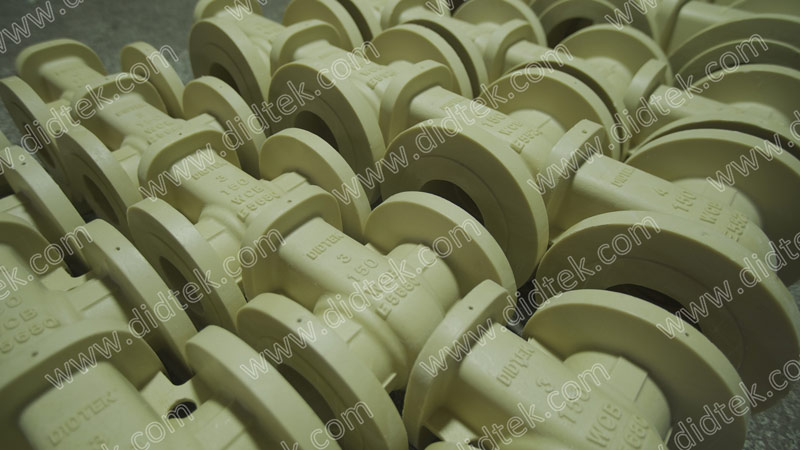
Didtek Heat Treatment Theory
All heat treatments involve heating and cooling metals, but there are three main differences in process: the heating temperatures, the cooling rates, and the quenching types that are used to land on the properties you want. In a future blog post, we’ll cover the different types of heat treatment for ferrous metals, or metal with iron, which consist of annealing, normalizing, hardening, and/or tempering.
To heat treat metal, you’ll need the proper equipment so that you can closely control all of the factors around heating, cooling, and quenching. For example, the furnace must be the proper size and type to control temperature, including the gas mixture in the heating chamber, and you need the appropriate quenching media to cool metal correctly.
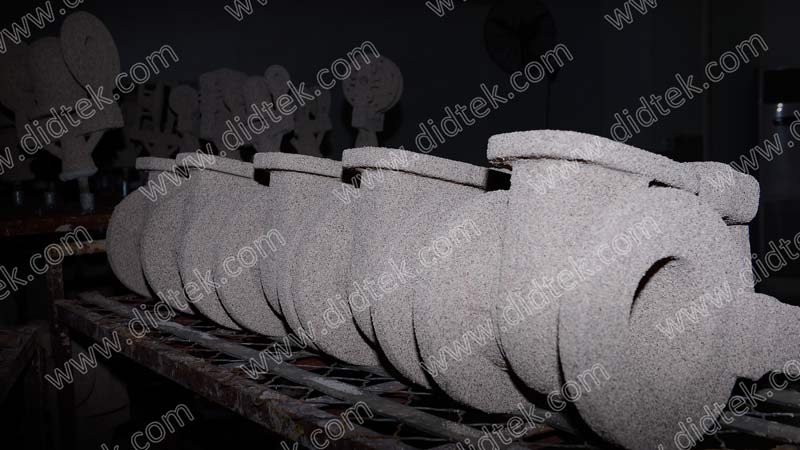
Didtek Stages of Heat Treatment
There are three stages of heat treatment:
Heat the metal slowly to ensure that the metal maintains a uniform temperature;Soak, or hold, the metal at a specific temperature for an allotted period of time;Cool the metal to room temperature
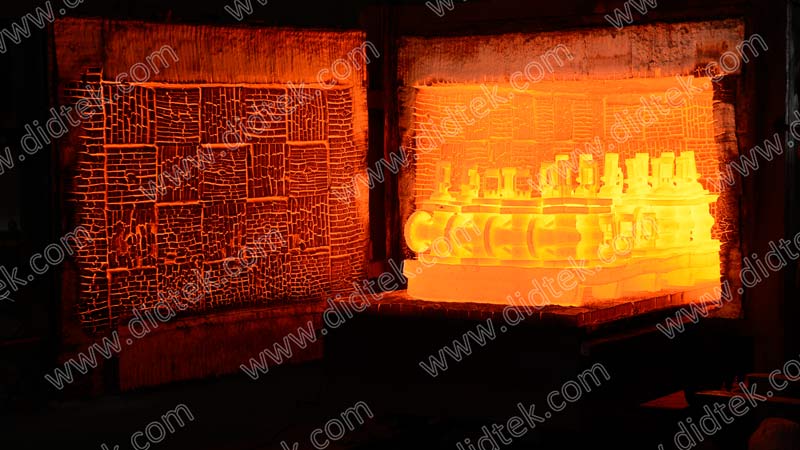
1.The Heating Stage
During the heating stage, the foremost aim is to make sure that the metal heats uniformly. You get even heating by heating slowly. If you heat the metal unevenly, one section may expand faster than another, resulting in a distorted or cracked section of the metal. You choose the heating rate according to the following factors:
The heat conductivity of the metal. Metals with high heat conductivity heat faster than those with low conductivity.
The condition of the metal. Tools and parts that have been hardened, or stressed, previously should be heated slower than tools and parts that haven’t.
The size and cross-section of the metal. Larger parts or parts with uneven cross sections need to be heated more slowly than small parts to allow the inside temperature to be close to the surface temperature. Otherwise, there’s a risk of cracking or excessive warping.
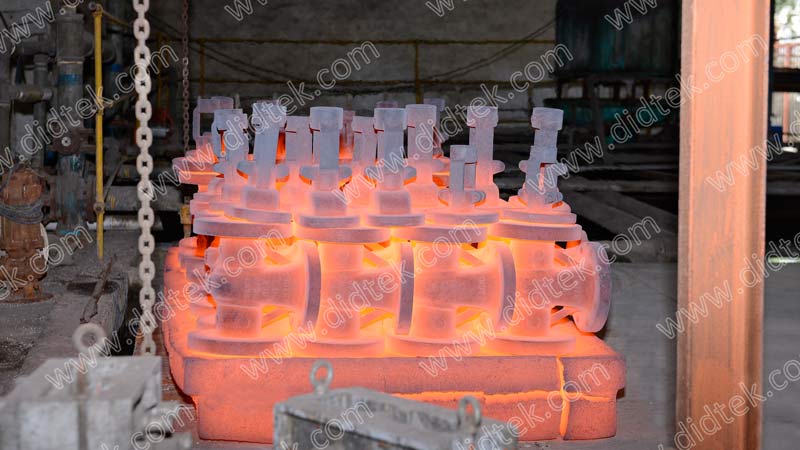
2.The Soaking Stage
The purpose of the soaking stage is to keep the metal at the appropriate temperature until the desired internal structure takes shape. The “soaking period” is how long you keep the metal at the appropriate temperature. To determine the correct length of time, you will need the chemical analysis and mass of the metal. For uneven cross-sections, you can determine the soaking period using the largest section.
Generally, you shouldn’t bring the temperature of the metal from room temperature to the soaking temperature in one step. Rather, you’ll need to heat the metal slowly to just below the temperature where the structure will change, and then hold it until the temperature is consistent throughout the metal. After this step of “preheating”, you more quickly heat the temperature to the final temperature that you’ll need. Parts with more complex designs may require layers of preheating to prevent warping.
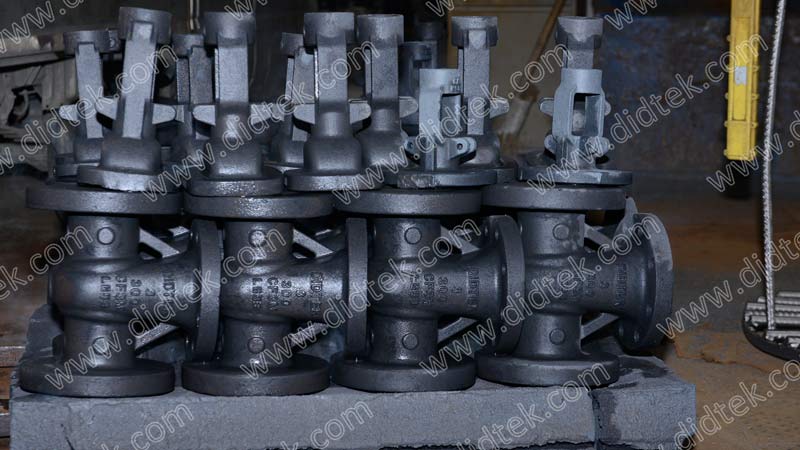
3.The Cooling Stage
In the cooling stage, you’ll want to cool metal back to room temperature, but there are different ways to do this depending on the type of metal. It may need a cooling medium, a gas, liquid, solid, or combination thereof. The rate of cooling depends on the metal itself and the medium for cooling. It follows that the choices you make in cooling are important factors in the desired properties of the metal.
Quenching is when you rapidly cool metal in air, oil, water, brine, or another medium. Usually quenching is associated with hardening because most metals that are hardened are cooled rapidly with quenching, but it is not always true that quenching or otherwise rapid cooling results in hardening. Water quenching, for example, is used to anneal copper, and other metals are hardened with slow cooling.
Not all metals should be quenched – quenching can crack or warp some metals. Generally, brine or water can rapidly cool metal, while oil mixtures are better for a slower cooling. The general guidelines are that you can use water to harden carbon steels, oil to harden alloy steels, and water to quench nonferrous metals. However, as with all treatments, the rate and medium of cooling you choose must fit the metal.
works with various heat-treating partners to provide our customers with quality parts that meet their specifications. We offer turn-key, heat-treated products from our nationwide stock of plate, bar, and sheet inventory.
Didtek Valve Group Co.,Ltd
Tel: +86 577 67378255
Fax: +86 577 67338181
Mail: sales@didtek.com / sales@didtekvalve.com

